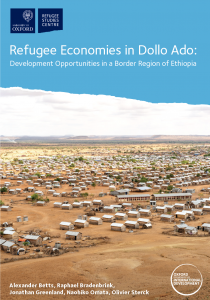Borders, Mobility, and Livelihoods - Refugee Economies
Credit: UNHCR/Esther Ruth Mbabazi
Borders, Mobility, and Livelihoods
Building upon our findings during the first phase of our study, this research strand explores the role of various types of mobility for refugees’ socio-economic lives.
In particular, we aim to explore refugees' cross-border movements and how such movements shape refugees’ livelihood strategies, opportunities for self-reliance, and socio-economic outcomes.
Borders and mobility are central to refugees’ livelihoods. On the one hand, borders can constrain their social and economic freedoms. On the other hand, borders can provide refugees with better access to socio-economic opportunities and resources, which, in turn, can lead to opportunities for self-reliance. Therefore, it is important to understand refugees’ livelihood strategies in relation to their movements.
The scarcity of academic research on refugees’ cross-border movements in an African context has meant that the importance of refugees’ mobility-related livelihood strategies is often overlooked by international organisations, or rendered illicit due to the host county’s national policies and security concerns. As a consequence of ‘border blindness’ (Hammond, 2019), policy-makers and practitioners often end up failing to capitalise on existing socio-cultural assets and networks across different borders in aid programming.
Through empirical research, we aim to narrow these knowledge gaps and contribute to the creation of a better understanding of refugees’ mobility in relation to their socio-economic lives.

